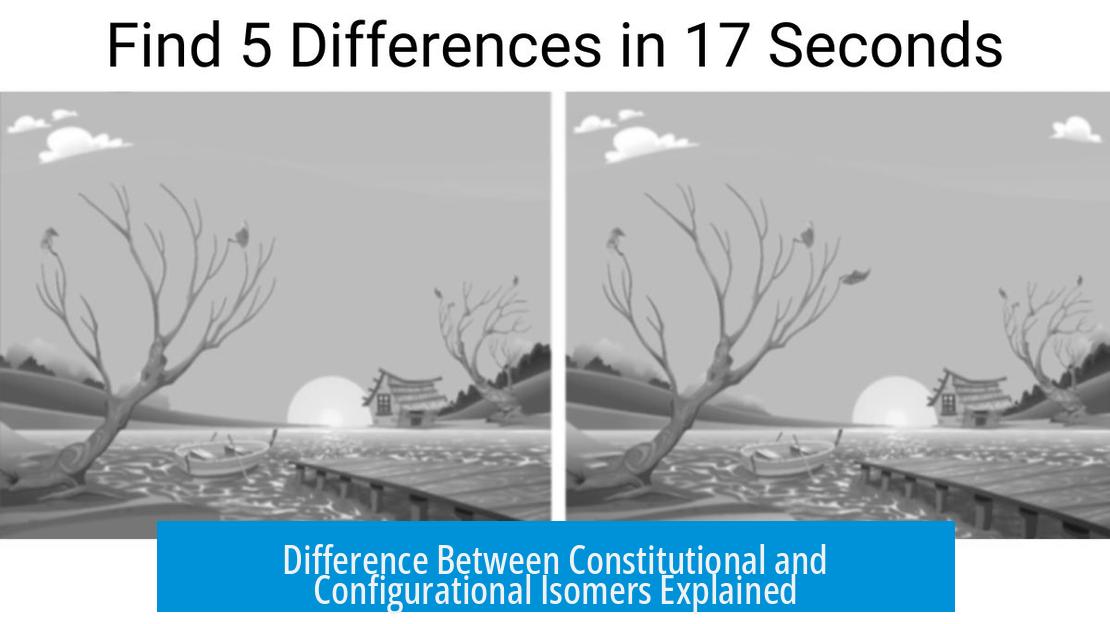Difference Between Constitutional and Configurational Isomers

Constitutional and configurational isomers differ mainly in how their atoms are connected and arranged. Constitutional isomers have the same molecular formula but differ in the bonding pattern. Configurational isomers have the same bonding but vary in spatial orientation.
1. Constitutional Isomers
Constitutional isomers share the same chemical formula. However, their atoms connect differently. This means the sequence or order of atom bonds changes between isomers.
For example, cyclohexane and methylcyclopentane are constitutional isomers. Both have the formula C6H12, but cyclohexane forms a six-membered ring, while methylcyclopentane is a five-membered ring with a methyl group attached.
Characteristic points:
- Atoms connect via different bonds
- Different connectivity leads to distinct molecules
- Result in different chemical and physical properties
Mnemonic: “Different bonds constitute constitutional isomers.”
2. Configurational Isomers
Configurational isomers also have the same molecular formula and the same bonds between atoms. However, their spatial arrangement differs.
These isomers cannot be interconverted just by rotating bonds because their arrangement in space is fixed unless bonds break.
Types include:
- Geometric (E/Z or cis/trans) isomers: Differ in relative orientation around double bonds or rings. For example, E-but-2-ene vs. Z-but-2-ene.
- Optical (R/S) isomers: Also called enantiomers, these are non-superimposable mirror images, like (+)-alanine and (-)-alanine.
Key points:
- Same connected atoms and bonds
- Different spatial orientation
- Different spatial configuration affects optical and chemical behavior
Recall: “The same bonds are configured differently in space.”
Comparison Table
| Feature | Constitutional Isomers | Configurational Isomers |
|---|---|---|
| Molecular Formula | Same | Same |
| Bonds Between Atoms | Different connectivity/bonding patterns | Same bonding, different spatial arrangement |
| Interconversion | Requires breaking bonds | Cannot interconvert without breaking bonds |
| Examples | Cyclohexane vs. methylcyclopentane | E/Z but-2-ene; R/S alanine |
Summary Points
- Constitutional isomers differ in atom connectivity.
- Configurational isomers have same atom connections but differ in 3D orientation.
- Configurational isomers include geometric (cis/trans) and optical (enantiomers) types.
- Both types share the same molecular formula but differ in structure and properties.





Leave a Comment